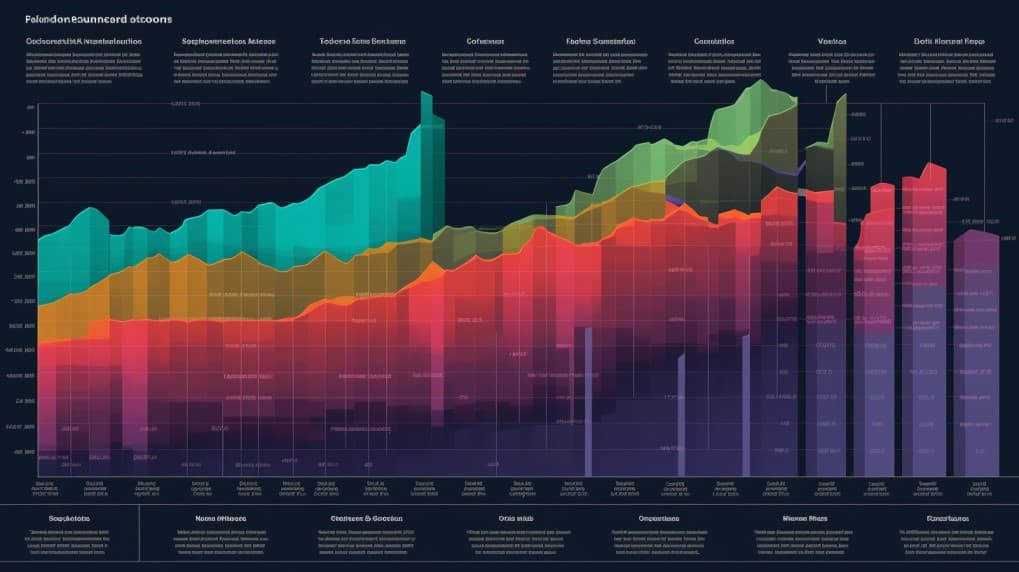
How does the DXD ETF work?
In the ever-evolving world of finance, Exchange-Traded Funds (ETFs) have become a popular choice for both seasoned investors and newcomers to the market. One such ETF that has caught the attention of investors is the DXD ETF, which aims to provide a unique investment opportunity in the financial sector. In this article, we will delve into the workings of the DXD ETF, its underlying assets, and the benefits and considerations associated with investing in it.
DXD ETF: Overview
Before we dive into the specifics, let's start with a brief overview of the DXD ETF. DXD stands for "Double Short Dow 30 ETF," and it is designed to provide investors with inverse exposure to the Dow Jones Industrial Average (DJIA). In simpler terms, when the DJIA goes down, DXD goes up, and vice versa. It achieves this by using financial derivatives known as futures contracts.
The DXD ETF is managed by a team of experienced professionals who aim to deliver daily returns that correspond to two times the inverse (-2x) of the daily performance of the DJIA. This means that if the DJIA falls by 1% on a given day, DXD should theoretically rise by 2% on the same day.
DXD ETF: Underlying and Exposure - What Does It Track and How?
Understanding what the DXD ETF tracks and how it accomplishes this is crucial for potential investors. As mentioned earlier, the DXD ETF aims to provide inverse exposure to the DJIA. But what exactly does this mean?
The DJIA is a well-known stock market index that represents 30 of the largest and most influential companies in the United States. When these companies' stock prices collectively rise, the DJIA goes up, and when they fall, the DJIA goes down. DXD, on the other hand, seeks to profit from the opposite movement of the DJIA.
To achieve this inverse exposure, the DXD ETF primarily uses financial derivatives called futures contracts. These contracts allow the fund to gain or lose value based on the performance of the DJIA without directly owning the underlying stocks. It's important to note that futures contracts are inherently leveraged instruments, which means that DXD amplifies the daily returns - both gains and losses - of the DJIA by a factor of two.
Investors in DXD should be aware that this leveraged approach can lead to amplified volatility and increased risk. The fund aims to deliver double the inverse daily returns of the DJIA, but over longer periods, the results may deviate due to compounding effects.
 DXD overlap How does work the DXD ETF?
DXD overlap How does work the DXD ETF?
DXD ETF: Benefits of Investing
Investing in the DXD ETF can offer several potential benefits for investors looking to profit from market downturns or hedge their existing portfolios:
Inverse Exposure: DXD allows investors to profit from a falling DJIA, providing a hedge against market downturns.
Liquidity: Being an ETF, DXD offers liquidity advantages, as it can be bought and sold throughout the trading day at market prices.
Diversification: By investing in DXD, investors can gain exposure to a broad range of DJIA components without directly holding individual stocks.
Transparency: ETFs are known for their transparency, as they disclose their holdings daily, allowing investors to monitor the fund's composition.
DXD ETF: Considerations Before Investing
While the DXD ETF presents an intriguing investment opportunity, it's essential to consider several factors before adding it to your portfolio:
Leverage and Risk: DXD employs leverage to amplify returns, which can lead to increased risk. Be prepared for higher volatility and the potential for substantial losses.
Short-Term Investment: DXD is designed for short-term trading and hedging strategies. It may not be suitable for long-term investors due to compounding effects.
Tracking Error: The fund may not precisely track its intended daily returns over extended periods due to factors like expenses and the rebalancing of futures contracts.
Market Timing: Successfully timing market downturns can be challenging. Make sure your investment in DXD aligns with your overall financial goals and risk tolerance.
Conclusion
In conclusion, the DXD ETF offers a unique opportunity for investors to gain inverse exposure to the Dow Jones Industrial Average. It employs futures contracts to deliver double the inverse daily returns of the DJIA, making it a valuable tool for hedging strategies and short-term trading. However, investors should approach DXD with caution, as its leveraged nature amplifies both gains and losses. It's crucial to thoroughly understand the fund's mechanics and consider your investment goals and risk tolerance before adding DXD to your portfolio.
In the ever-changing landscape of finance, ETFs like DXD provide investors with innovative ways to navigate the market's complexities. As always, consult with a financial advisor to determine how DXD fits into your overall investment strategy.
Sources
DXD ETF issuer
DXD ETF official page
FAQ
What is the DXD ETF?
The DXD ETF is an exchange-traded fund that provides investors with exposure to a specific sector.
What is the underlying index that the DXD ETF aims to track?
The DXD ETF aims to track the performance of a specific index, which includes companies involved in its respective sector.
What types of companies are included in the DXD ETF?
The DXD ETF includes companies from its focused industry.
How does the DXD ETF work?
The DXD ETF functions by pooling investors' capital to purchase a diversified portfolio of sector-related stocks.
What are the advantages of investing in the DXD ETF?
Investing in the DXD ETF offers exposure to a specialized sector with potential for growth.